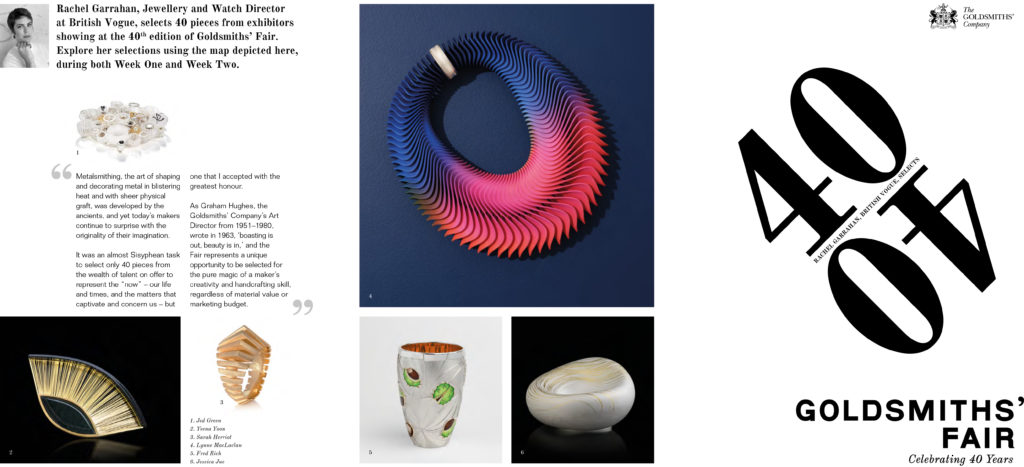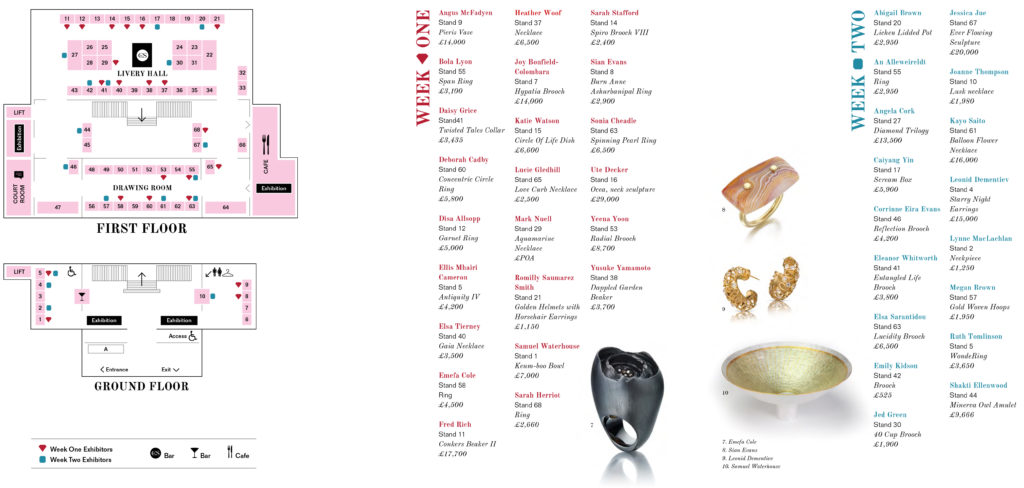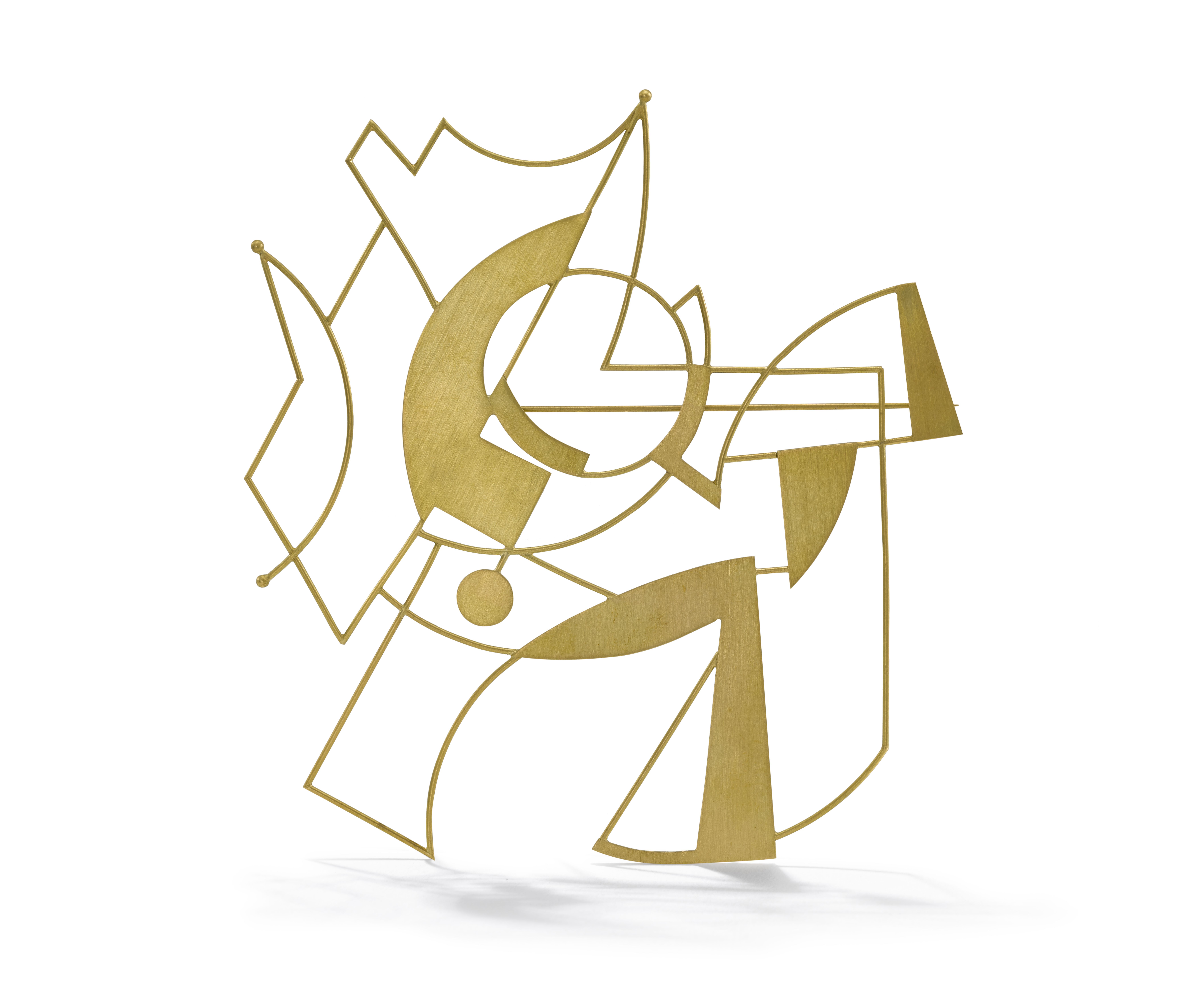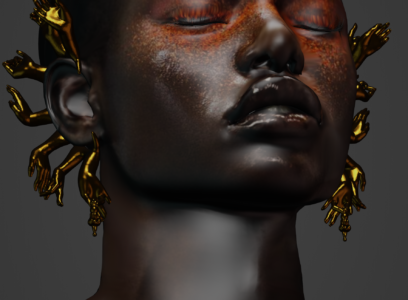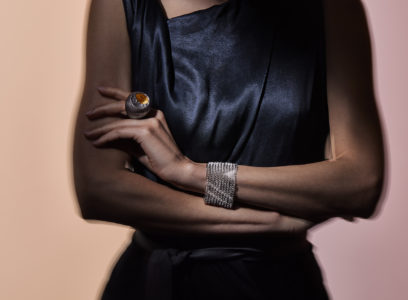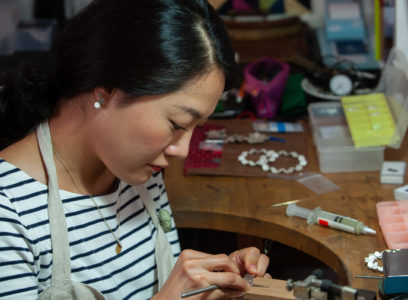40 at 40 Exhibition
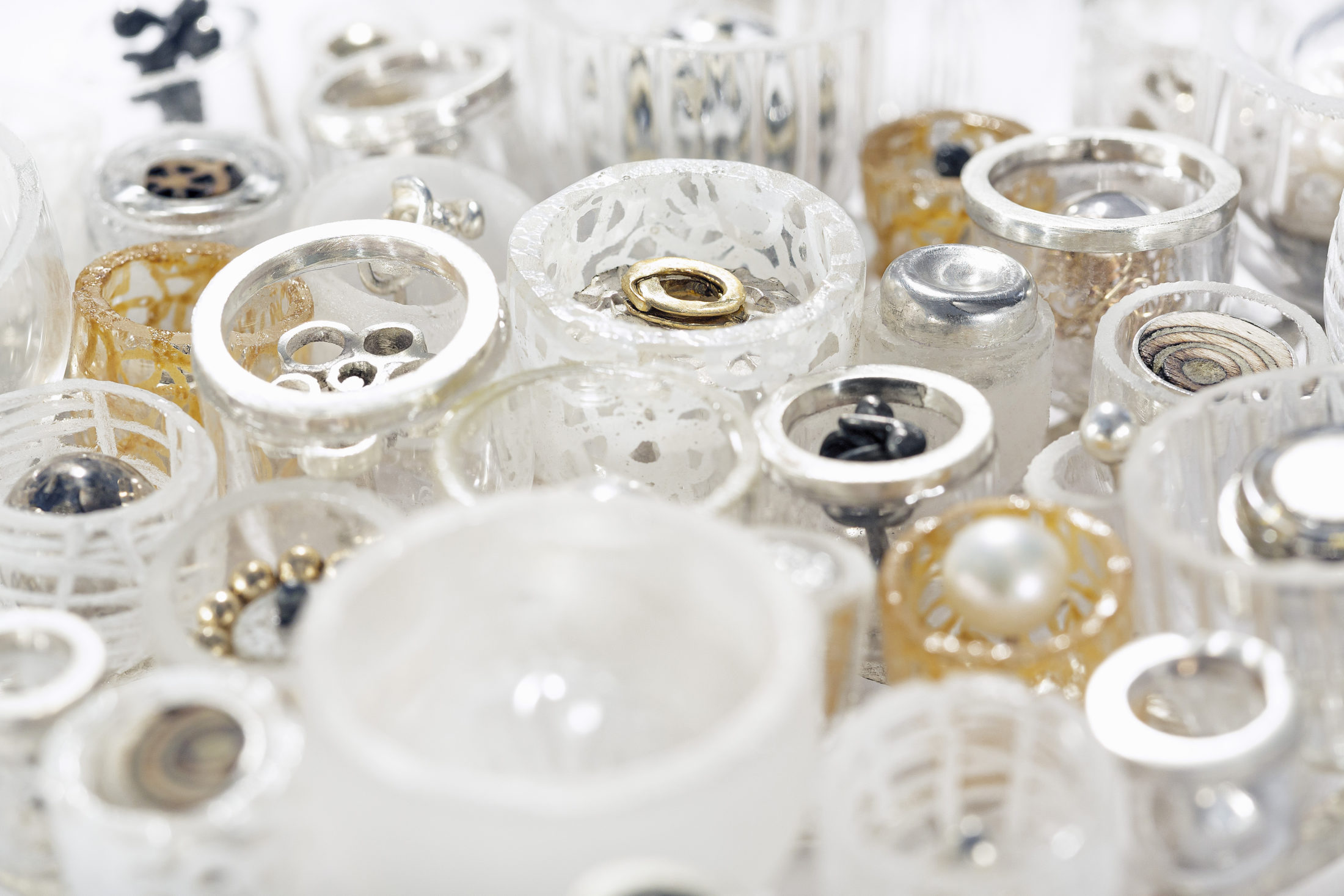
Rachel Garrahan, Jewellery and Watch Director at British Vogue
Metalsmithing, the art of shaping and decorating metal in blistering heat and with sheer physical graft, was developed by the ancients, and yet today’s makers continue to surprise with the originality of their imagination, the refinement of their eye and the skill of their hand. This 40th anniversary edition of Goldsmiths’ Fair celebrates the work of more than 135 silversmiths and jewellers from across Britain. It was an almost Sisyphean task to select only 40 pieces from the wealth of talent on offer to represent the “now” – our life and times, and the matters that captivate and concern us – but one that I accepted with the greatest honour.
As Graham Hughes, the Goldsmiths’ Company’s art director from 1951–1980, wrote in 1963 ‘Boasting is out, beauty is in,’ and the fair represents a unique opportunity to be selected for the pure magic of a maker’s creativity and handcrafting skill, regardless of material value or marketing budget. Take the enticing tumble of textures and colours in Jed Green’s glass brooch, or the seemingly effortless fluidity of Jessica Jue’s silver sculpture. Mark Nuell’s extraordinary aquamarine necklace is a puzzle of stones cut and set by Mark himself, a reflection of a childhood spent among the sapphire mines of the Australian Outback.
As this summer’s own blistering heat demonstrated, the urgency of combatting the climate crisis has never been greater. Ute Decker was a pioneer in this respect, putting ethical sourcing at the top of her list of values long before it was fashionable to do so. It’s heartening now to see it becoming accepted practice among an ever wider group of makers, who take on this complex and thorny issue with the research and commitment it deserves.
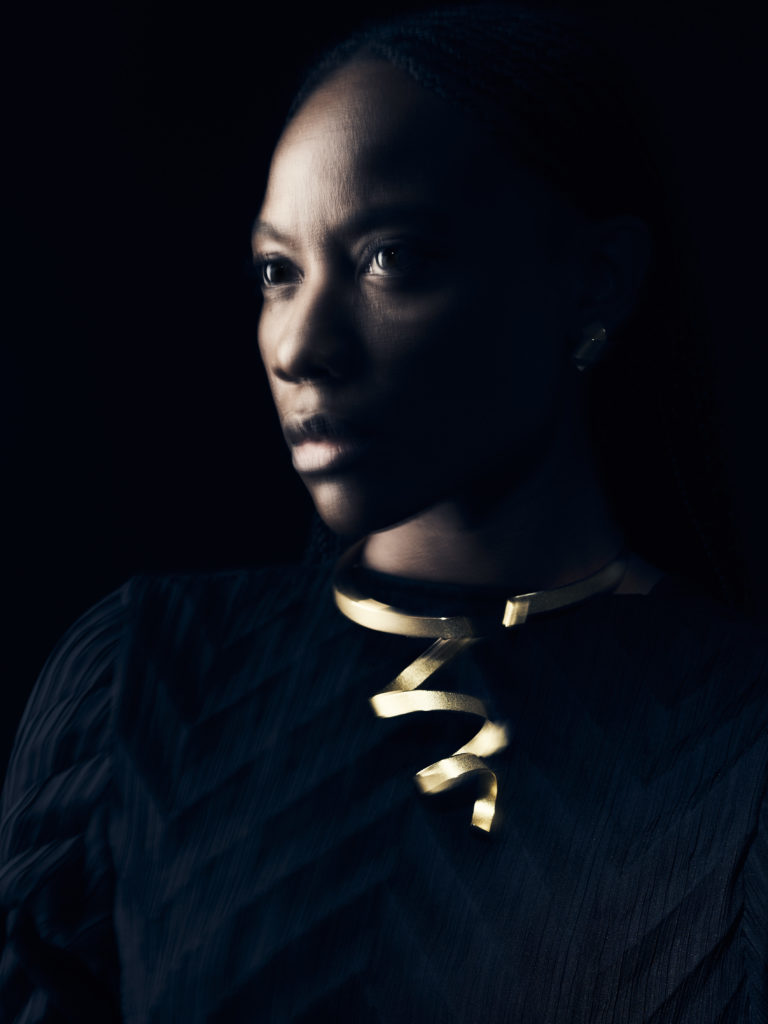
First time exhibitor Shakti Ellenwood recently became the UK’s first artisanal jeweller to be awarded Certified B Corporation status, which ensures the meeting of rigorous social and environmental standards. Sian Evans meanwhile has been committed to the cause of minimising her carbon footprint for many years. Her latest collection uses only gemstones found along the coasts and rivers of Britain, all hand carved by Sian herself. The delicately mesmerising lines of the Burn Anne agate, discovered along a Scottish stream, are celebrated in the beautiful simplicity of her ring.
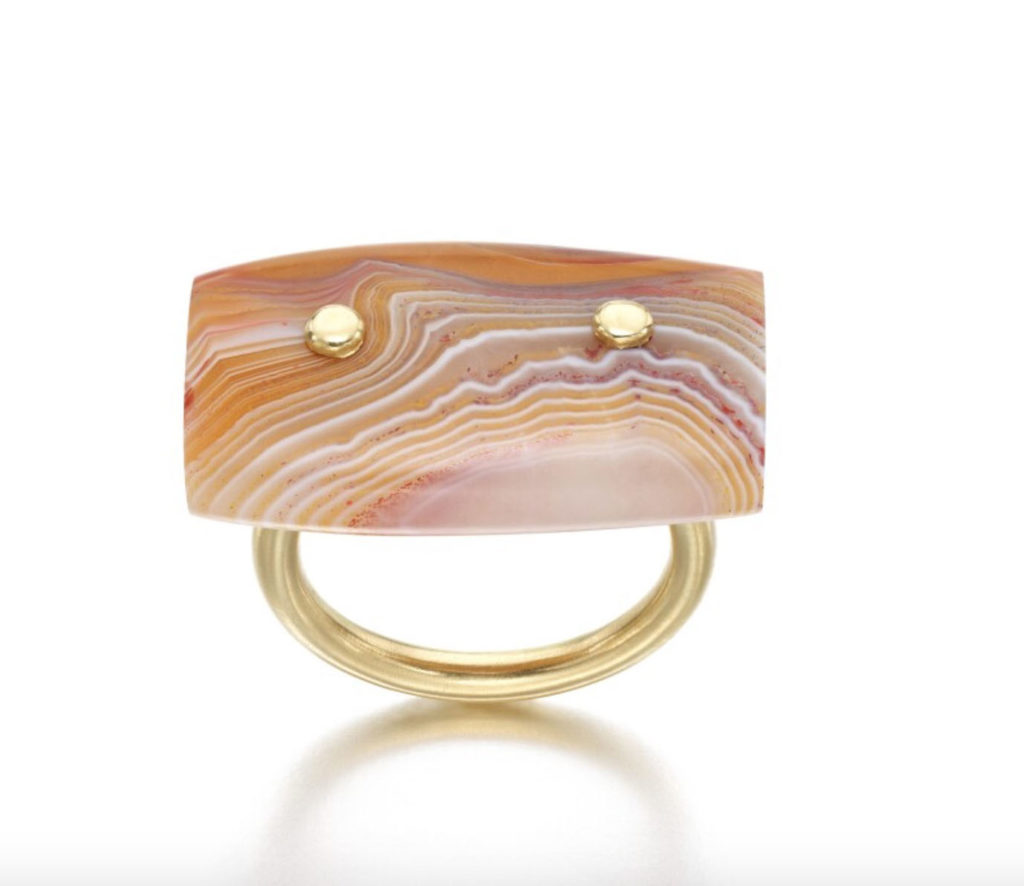
The idea of celebrating the beauty on our doorstep is one shared by many makers at the fair. Despite the pressures we may put upon it, the enduring beauty of Britain’s natural world is a constant. Fred Rich’s glossy, plump conkers, Abigail Brown’s delicate lichen, and the familiar creatures in Katie Watson’s Circle of Life are beautifully realised odes to a natural world that is worth celebrating whatever the year.
Of course no selection would be complete without looking to the future too. There are the makers who innovate with their materials, constantly seeking new possibilities, whether it be Lucie Gledhill or Joanne Thompson with their chain work, or Daisy Grice pushing 3D printing technology to create new forms of adornment. And what selection is complete without a wealth of new blood to keep us excited about the generations of makers to come? This year’s newcomers and graduate bursary holders include Megan Brown, whose delicate woven gold earrings reflect 180 years of family history in the textile and jewellery businesses, and Eleanor Whitworth whose fascination with the curiosities of nature result in the intriguing tangle and texture of her gold brooch.
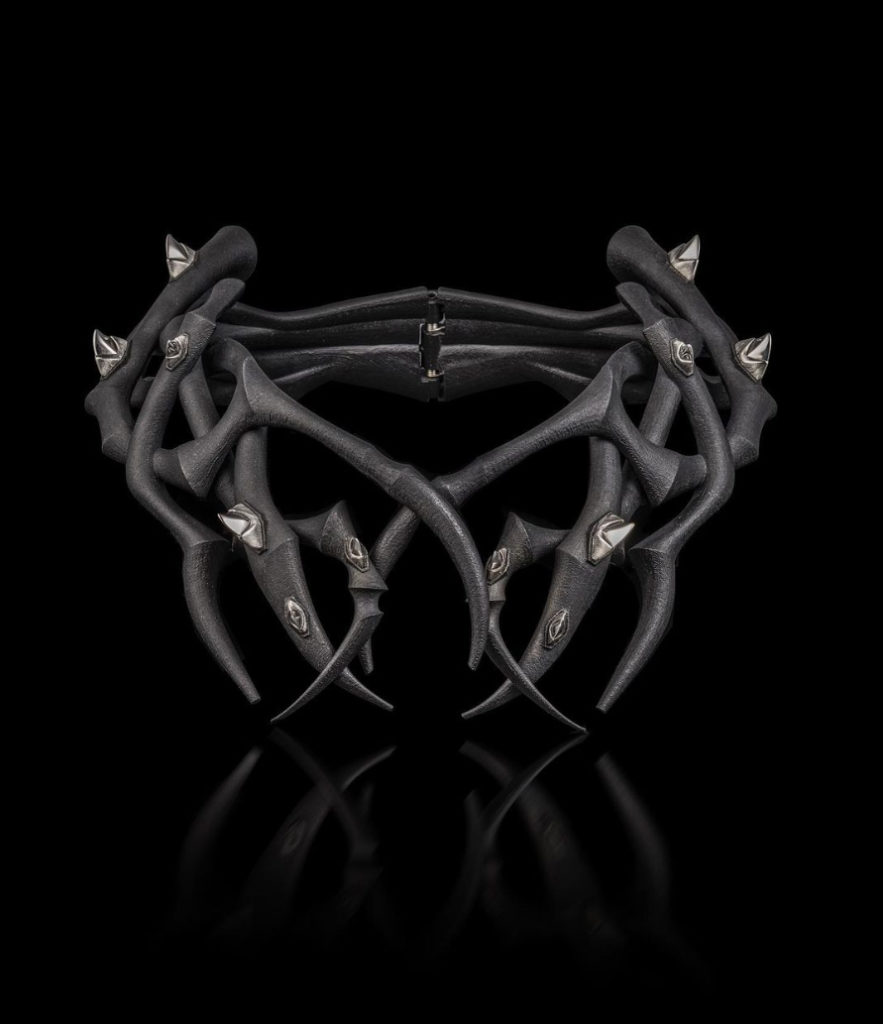
Another matter that concerns the world in 2022 of course is diversity, and my selection reflects a growing awareness of the need to reflect our wider society in terms of geographical location, race, age and gender. London of course is still a huge draw in terms of career and educational opportunities but moves are afoot to spread funding and support across the map, whether it be in the historically rich silversmithing and jewellery industry seams of Sheffield and Birmingham, or in the wealth of creative talent in Scotland. Immigrants too have informed and enriched the goldsmith’s trade in Britain for centuries and I’m pleased to see they continue to do so today. Let this be a clarion call that what is needed above all is a commitment to improving opportunities for talent, whatever someone’s background, resources and stage of development, from educational opportunities at grassroots level to mid-career business development and mentoring.
Research by the UK Design Council found that in 2019, the overall design economy contributed £97.4bn in GVA (gross value added) to the UK economy, a staggering 4.9% of total UK GVA. And yet the challenges facing the creative industries – including those supported by the Goldsmiths’ Company – today are greater than ever. Soaring prices in a post-Brexit world, a vastly under-resourced education system, a lack of respect for the skills involved, all mean that life can be an uphill struggle for creatives, no matter how prodigious their talent. The recent digitisation of the Fair gave these makers a welcome and much-deserved global platform. It is now up to the rest of us to do the hard work of understanding and appreciating what they do, and recognising why their creations are treasures for a new age.
